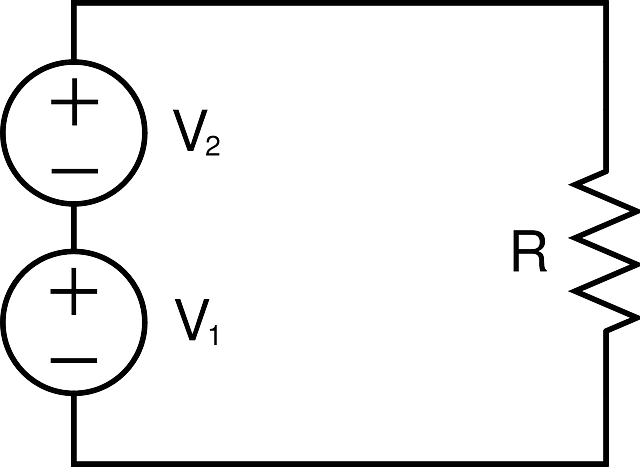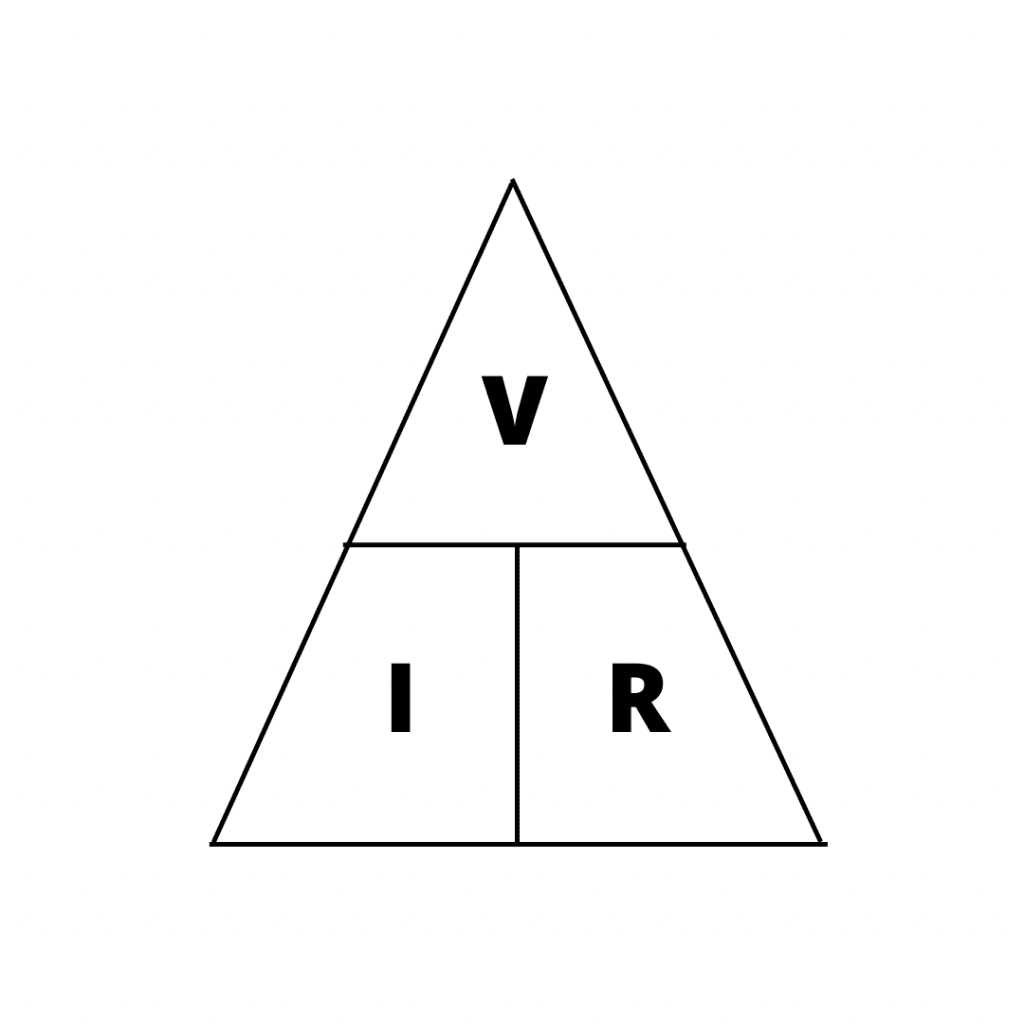Ohm’s law is a formula that states the relationship between Voltage ‘V’, Current ‘I’, and Resistance ‘R’ in an electric circuit. It is one of the important and most basic laws of electrical circuits.
Before proceeding further in detail with Ohm’s Law, we ought to understand the three important terms that are Voltage, Current, and Resistance.
Definition of Voltage, Current, and Resistance
What is Voltage?
Voltage is also called electromotive force and is defined as the pressure from an electrical circuit’s power source that pushes charged electrons (current) through an electrical loop, enabling them to do work such as lighting a bulb or running a fan.
Mathematically, it is the expression of the potential difference in charge between the two points in an electrical field. It is denoted by ‘V’.

What is Current?
Current is defined as the rate of flow of electrons in an electric circuit at a given point. Current is measured in ‘Ampere’ in SI unit and is denoted by ‘A’.

What is Resistance?
Resistance is defined as the restriction to the flow of current and is measured in ‘Ohms’ and is denoted by (Ω).

Ohm’s Law Explanation
In other words, Ohm’s law states that, whenever we pass voltage across a conductor, this voltage is directly proportional to the current flowing through that conductor, provided temperature and all physical conditions remain constant.
Ohm’s Law Formula
Mathematically, Ohm’s law can be written as
V= I x R
Where ‘V’ denotes the voltage, ‘I’ donates the Current, and ‘R’ is the resistance.
So, If we wanted to calculate the valve voltage ‘V’, then we must know the values of Current ‘I’ and Resistance ‘R’. From the formula, it can be seen that Voltage is directly proportional to the Current and Resistance. This means, If the current in the circuit increases, the voltage will get increase. In the same way, if the Resistance in the circuit increases, voltage increases.
This formula can also be written as
I= V/R
In this case to calculate the valve of Current ‘I’, then we must know the values of Voltage ‘V’ and Resistance ‘R’.
or
R= V/I
Here to calculate the valve of Resistance’R’, then we must know the values of Current ‘I’ and Voltage ‘V’.
Ohm’s Law Magic Triangle
Ohm’s Law Magic Triangle is shown below and is an easy way to remember to calculate the voltage, current, and resistance.

So, it is clear from the triangle that if we wanted to calculate Voltage, then V =I x R is the answer. To calculate Current, the formula will become I =V/R, and similarly, to calculate the Resistance, the formula will be R= V/I.
Let us understand Ohm’s law with some numerical values:
Example 1: An electric oven draws 2.5 A from a 110 V source. Calculate the resistance of the heating element?
Solution: Now in this example, we are given two values that are Current and Voltage and we have to find the value of resistance:
So as we have studied from the Triangle , to calculate the Resistance, the formula will be
R= V/I
R= 110/2.5
R= 44 Ω
Example 2: How many milliamperes of current will flow through a circuit with a 20 V source and 5 kΩ of resistance?
Solution: Now in this example, we are given two values that are Resistance and Voltage and we have to find the value of Current:
So as we have studied from the Triangle , to calculate the Current, the formula will be
I=V/R
I= 20/5
I= 4mA
Frequently Asked Questions
What is Ohm’s law explain?
Ohm’s law is a formula that states the relationship between Resistance ‘R’, Voltage ‘V’, and Current ‘I’, in an electric circuit. Mathematically, it is written as V= I x R
What are the 3 formulas in Ohm’s law?
The three formulas in ohm’s law can be written as:
1. V = I x R
2. I= V/R
3. R= V/I
What is Ohm’s law and its formula?
Ohm’s law states that, whenever we pass voltage across a conductor, this voltage is directly proportional to the current flowing through that conductor, provided temperature and all physical conditions remain constant and given as V=IxR
3 thoughts on “Ohm’s Law- Definition, Formula, Examples”